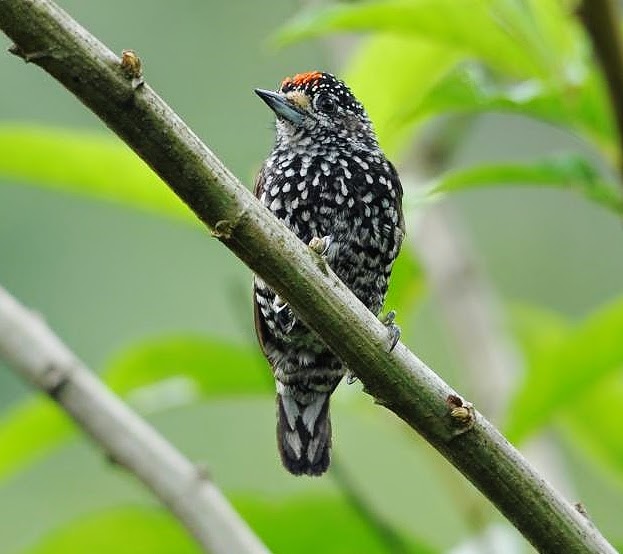 |
| Photo by Gerard Gorman (Internet Bird Collection) |
Common name:
speckle-chested piculet (en); pica-pau-anão-malhado (pt); picumne perlé (fr); carpinterito perlado (es); perlenbrust-zwergspecht (de)
Taxonomy:
Order Piciformes
Family Picidae
Range:
This species is endemic to Peru, only being found in the central Huallaga valley and very locally in the Utcubamba valley in the Andes of north-western San Martín, in the north of the country.
Size:
These tiny woodpeckers are 10 cm long and weigh 9-11 g.
Habitat:
The speckle-chested piculet is found in moist tropical forests, favouring mountain forests with many epiphytes and tall second growth. They occur at altitudes of 1.100-2.200 m.
Diet:
They forage alone or in small groups, searching for invertebrates in tree bark.
Breeding:
Speckle-chested piculets excavate nest cavities in soft or rotten wood of old trees. the female lays 2-4 eggs which are incubated for 12-14 days. The chicks are fed by both parents and fledge 21-24 days after hatching.
Conservation:
IUCN status – EN (Endangered)
This species has a relatively small breeding range and the global population is estimated at 6.000-15.000 individuals. There is no reliable information on population trends, but the speckle-chested piculet is suspected to lose 65% of suitable habitat within its range over the next 13 years based on a model of Amazonian deforestation, so a rapid decline is expected in the near future. Logging as been a problem in the region since at least the 1930s, and deforestation for coca plantations became a serious problem in the 1980s, but has ceased more recently. Continuing population growth and immigration have led to heavy disturbance of forests both through clear-cutting and selective logging, as well as conversion to agriculture, particularly coffee plantations and pastures. Although part of the species range is located within the Alto Mayo Protected Forest, forest clearance has continued unabated.







